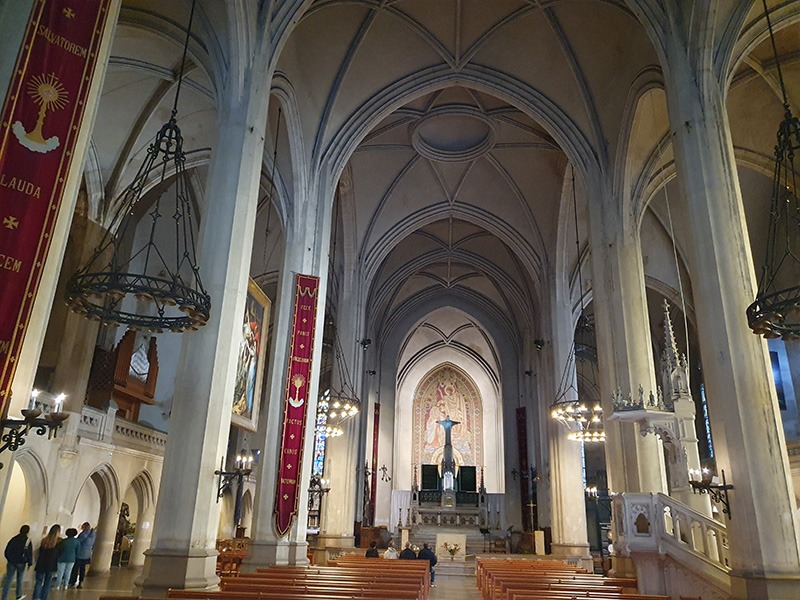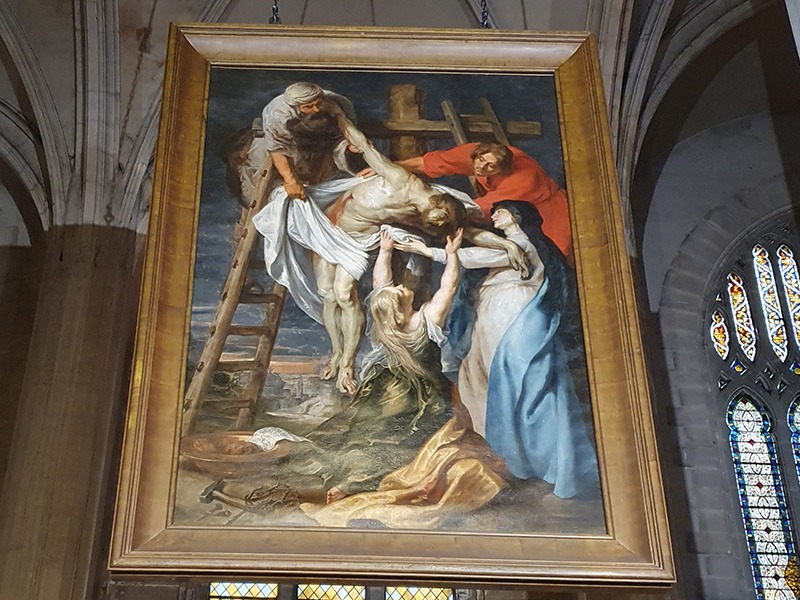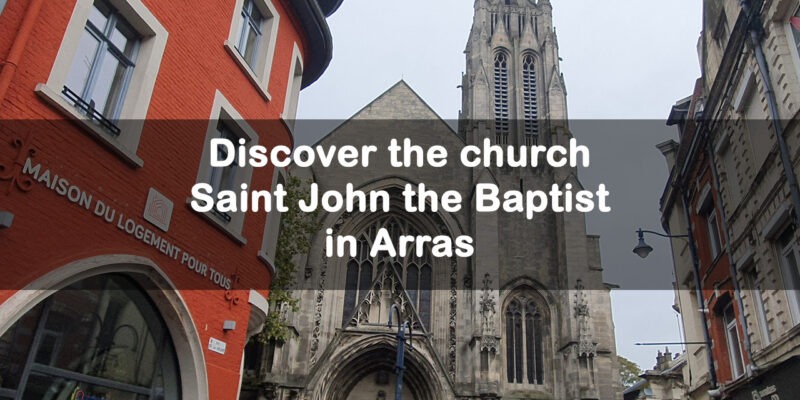TheSaint-Jean-Baptiste church in Arras is a landmark building with a rich history of destruction and rebirth. Located in the heart of the city, this church, with its flamboyant neo-Gothic architecture, attracts visitors as much for its history as for its architectural beauty. Let’s take a look back at the milestones that have marked the existence of this exceptional place of worship.
Saint Jean-Baptiste church with a turbulent past
Thehistory of Saint-Jean-Baptiste church begins in the 16th century, when the church of Saint-Nicolas-des-Fossés was erected on this site in 1524. Originally dedicated to Saint Nicolas, it occupied a strategic location near the city walls. During the French Revolution, the church was transformed into the Temple de la Raison (Temple of Reason), an assignment that saved it from destruction, unlike many other religious buildings of the period.
In 1803, the church’s name was changed to Saint-Jean-Baptiste. At that time, it was used as a temporary cathedral to replace the cathedral of Saint-Vaast Abbey, destroyed during the French Revolution. This temporary role lasted until 1833, when work on the new Arras cathedral was completed. Saint-Jean-Baptiste then lost its cathedral status, but continued to be an active place of worship.
The destruction of the First World War and the rebirth of the church
In 1915, the church was severely damaged by the bombardments of the First World War. During these tragic events, two brave firemen, Wacquez and Glasson, lost their lives fighting the flames that ravaged the building. The street on which the church stands now bears their names in tribute to their sacrifice. After the war, the church had to be rebuilt. Reconstruction work began in the 1920s under the direction of architects Mazet and Mulard, and the church was finally blessed in 1927.
The new church adopts a flamboyant neo-Gothic style, with architectural elements reminiscent of English Gothic, notably in the shape of the lancets in the western bay. Built of brick and concrete, and clad in stone, the church features a side steeple housing four fairly tall bells, echoing the Belfry. At the entrance, an imposing porch welcomes visitors, surmounted by a statue of Saint John the Baptist, the church’s patron saint, placed in the tympanum.

Interior of Saint-Jean-Baptiste church
A remarkable artistic heritage
The Saint-Jean-Baptiste church in Arras is remarkable not only for its architecture, but also for its artistic heritage. Notable among these is Rubens’ famous “Descent from the Cross” from the early 17th century. This painting, once housed in the former cathedral, is now on display in the church, a reminder of the city’s rich cultural past. Nearby is a sculpted group depicting the Baptism of Christ, dating from the mid-19th century, as well as other antique furnishings. The north chapel houses a 17th-century altarpiece, adorned with twisted colonnettes and surmounted by a 14th-century sculpture of Notre-Dame des Ardents. The altarpiece comes from the Chapelle des Ardents, which stood on today’s Place des Héros before being demolished in 1792.
The ensemble was transferred to Saint-Nicolas-des-Fossés in 1802, a year before the church took on the vocation of Saint-Jean-Baptiste. The church’s stained glass windows, some created between the wars, also contribute to the charm of the place. They depict religious scenes such as the Assumption, the death of Saint Joseph, and the preaching of Saint John the Baptist in the desert. These works of art, combined with other stained-glass windows created after the Second World War, enrich the interior atmosphere of the building, creating a space conducive to meditation and contemplation.

Rubens’ Descent from the Cross
A church at the heart of life in Arras
Today, the Church of St. John the Baptist continues to play a central role in the spiritual and cultural life of the town. Located on a lively pedestrian street, it is easily accessible to residents and visitors alike. The church is part of the Notre-Dame-en-Cité parish, which covers downtown Arras. Religious services are held here regularly, and many of the faithful come to worship here every week. Whether for a cultural visit or a moment of prayer, the Saint-Jean-Baptiste church is a must-see on any walk through Arras.
The church of Saint-Jean-Baptiste, with its eventful history and artistic heritage, bears witness to the resilience of Arras through the centuries. It embodies the city’s unique blend of tradition and renewal, while offering a place of tranquility and beauty in the heart of the city center. A visit to Saint-Jean-Baptiste is to plunge into the history of Arras and discover an important part of its cultural heritage. Location: Close to the Place des Heros and shopping shopping streets :
To go further and conclude : Who was Saint John the Baptist ?
Saint John the Baptist is a central figure in Christianity, known as the forerunner of Jesus Christ. He is considered the last of the Old Testament prophets and the first saint of the New Testament. Born of Zechariah and Elizabeth, who was related to the Virgin Mary, John the Baptist is mentioned in the Gospels as the one who prepared the people for the coming of Christ. His main mission was to call people to repentance and baptize them in the Jordan, hence the name “John the Baptist”. John’s baptism had a symbolic meaning of purification and spiritual renewal.
He preached in the Judean desert, attracting large numbers of faithful who came to hear his words and be baptized as a sign of conversion. John the Baptist is also famous for having recognized Jesus as the “Messiah” when he saw him coming to be baptized. According to the Gospels, it was then that the Holy Spirit descended on Jesus in the form of a dove, and God’s voice was heard, affirming Jesus as his beloved son.
The end of John the Baptist’s life was tragic. He was imprisoned by King Herod Antipas for publicly denouncing the king’s illegitimate marriage to Herodias, his brother’s wife. At Herodias’ request, and following her daughter Salome’s dancing, Herod orders John the Baptist’s beheading.
This event, known as the beheading of Saint John the Baptist, has left its mark on people’s minds, and has been widely depicted in religious art down the centuries. St. John the Baptist is venerated by many Christian denominations and is the patron saint of numerous places, churches and religious orders. In art, he is often depicted dressed in animal skins, holding a reed cross or a lamb, symbols of his role as forerunner announcing the Lamb of God. His figure still inspires the faithful today, and his message of repentance and conversion remains a timeless call to spirituality and faith.
R.C.
